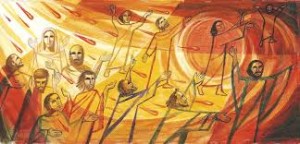Since I am doing some research on spirituality and ageing, I’d like to share with readers some quotes from a book I am reading, while at the same time store some references that may be useful for myself.
“Modern scholars of aging believe that an accumulation of empirical facts will someday produce total understanding of the natural and social worlds, allowing us to grow old without disease, suffering, conflict, or mystery. The problem with this mythology of scientific management is not that it is altogether false, but that it is only half true. The scientific management of aging fundamentally misconstrues the “problem” of aging. As T.S. Eliot once remarked, there are two kinds of problems in life. One kind requires the question, What are we going to do about it? The other calls for different questions: What does it mean? How does one relate to it? The first kind of problem is like a puzzle that can be solved (though aging is more accurately ameliorated than solved) with appropriate technical resources and pragmatic responses. The second kind of problem poses a deeper range of challenges, which no particular policy, strategy, or technique will overcome. Of course, shaping one’s vision according to the Christian story will not remove the challenges of aging, but it hold the possibility of helping us to understand, accept, and imaginatively transform the unmanageable, ambiguous aspects of our existence.”(69)
“Beginning in the late eighteenth century, the structure of the modern life course was constructed according to changes in demography. Family life, as all of life, began to reflect age-stratified systems of public rights and duties. As the experience of a modern family cycle (end of school, first job, marriage, children, survival of both partners to at least age fifty-five, “empty nest,” widowhood) became increasingly uniform, the boundaries drawn around participation in the adult world, the cultural definition of full humanity. Age-at-death was also transformed from a pattern of relative randomness to one of predictbility; as average life expectancy rose dramatically, death began to occur primarily in old age, not at varied points in the life cycle as had been the case in the past. As a result, fear of aging and fear of death merged. Modern society has now become a fully age-segregated society in which most of the aged do not occupy a vital role. It is no doubt a society that supports a burgeoning aging industry, but one that does not otherwise value the aging of the mind, body and spirit. It not only offers no moral endorsement or meaning to growing older, it fears growing old (identifying aging with loneliness, obsolescence, and death).” (73)
Stoneking, C.B. Modernity: the social construction of aging, in ed. Hauerwas S., Stoneking, C. B., Meador, K.G., and Cloutier, D., 2003, Growing Old in Christ, Grand Rapids Michigan: William B. Eerdmans Publishing Company.
Read More →
